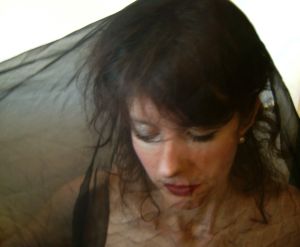 When archaeologists finish a dig, they throw in contemporary objects with the backfill so that future archaeologists know the site was previously excavated. The objects must be resilient to the elements and insist their epoch—things the crew has on hand, that they don’t mind leaving behind. Coke bottles, pennies, a soccer ball. Years ago, when my archaeology prof told our class this, I couldn’t help but imagine more strange and resonant objects interred to affect irony or gravitas….
When archaeologists finish a dig, they throw in contemporary objects with the backfill so that future archaeologists know the site was previously excavated. The objects must be resilient to the elements and insist their epoch—things the crew has on hand, that they don’t mind leaving behind. Coke bottles, pennies, a soccer ball. Years ago, when my archaeology prof told our class this, I couldn’t help but imagine more strange and resonant objects interred to affect irony or gravitas….
A toothbrush in the grave of an Incan king whose diet of sugary maize rotted his teeth to abscess, resulting in death. A knife in the former trash pit of a “vegetarian” monastery, in which archaeologists uncovered the notched bones of small mammals, birds, and fish.
Meanwhile, in poetry workshop, we wrote associatively in order to subvert our sophomoric reflexes for cliché and sentimentality. When we read poems, we examined what our prof called, after Pavese, “the image narrative.” We asked: How does one image contextualize another? What inference can we draw about the emotional or dramatic situation by the progression of images? If reordered, would they tell a different story? Who’s on first. What’s on second. We bullshitted because we knew a little but didn’t know enough. We threw ourselves into Jim Simmerman’s Mad Libs exercise, “Twenty Little Poetry Projects”:
5. Use the proper name of a person and the proper name of a place.
9. Use an example of false cause-effect logic.
10. Use a piece of talk you’ve actually heard (preferably in dialect and/or which you don’t understand).
11. Create a metaphor using the following construction: “The (adjective) (concrete noun) of (abstract noun)…”
We learned that poems should guide us rather than we them. We read Eastern Europeans like Šalamun and Szymborska. We traveled to Europe together and hiked the Slovenian karst to a cave, now collapsed, rumored to have been Dante’s model for the exit of the Inferno. I stepped on nettles and my prof picked the leaves off a nearby plant and told me to rub them on my searing foot. “The antidote,” he said, “often grows near the poison.”
*
Szymborska, in her 1962 collection Salt, describes a series of objects removed from their original context, placed inside the neutral and nearly humanless interior of the “Museum”:
Here are plates but no appetite.
And wedding rings, but the requited love
has been gone now for some three hundred years.
Here’s a fan—where is the maiden’s blush?
Here are swords—where is the ire?
Nor will the lute sound at the twilight hour.
Since eternity was out of stock,
ten thousand aging things have been amassed instead.
This poem always reminds me of lyrics from Dylan’s “Visions of Johanna” from Blonde On Blonde, released a mere five years later:
Inside the mu-zeeums
infinity gooooes up on triiiil. . . .
For Szymborska, however, the objects, even as they reassure us of our species’s long tenure, seek sovereignty from their contexts of time, place, and ownership. “Metals, clay, and feathers celebrate / Their silent triumphs over dates.” When the poem veers into the present, Szymborska presents us with a fraught, dramatized relationship between the speaker and one of her possessions:
As for me, I am still alive, you see.
The battle with my dress still rages on.
It struggles, foolish thing, so stubbornly!
Determined to keep living when I’m gone!
Szymborska turns on its head the idea that objects merely reflect their owners. So, often I give students the title story from Tim O’Brien’s The Things They Carried and ask them to use objects to reveal character, not only through what they own but also through how they look at objects. (The latter is the paramount virtue of ekphrasis, but that’s another essay.) The objects in “Museum” seek to continue being, and the poem implicates the owner in interfering with the dress’s ability to “keep living,” and the dress with the owner’s ego.
Of course, a real dress—excepting certain fashions—usually poses no threat to a person or their ego. The threat the dress and other objects seemingly pose in Szymborska’s poem are only projections by the speaker, and projections, like the caricature outline of our host on Alfred Hitchcock Presents, give us the sense and shape of a person, even when they don’t step into the frame.
*
Bruno Munari, the great 20th-century Italian designer, opens “Theoretical Reconstructions of Imaginary Objects” with a description of the journey an archaeological fragment makes once excavated:
[The] fragment passes into the hands of other experts, who try to reconstruct the whole animal, man or object (as the case may be) on the basis of structural measurements and analysis of the material and so on. . . .
As everyone well knows, the genuine part is left just as it was found while the reconstructed parts are made of quite different materials, partly to make the reconstruction work stand out.
Munari uses this practice as a model for an artistic exercise, one that demands that we rely on what’s tangible and present as well as speculation. Among the materials he suggests we use are torn wrapping paper, sheet music, and other documents, things that once had a shape and function before being torn up.
Let us set our imaginations to the task of reconstructing something which we assume to be unknown and build up a fantastic and unexpected thing according to the structural and material data provided by the few fragments we have to go on. . . .
. . . join up the various fragments. To do this we must study the outlines of the fragments and their internal structures.
Munari’s exercise, if followed literally, results in a collage, but the process described here reminds me of the process of writing a poem or, at the very least, an ideal model for the poet’s craft. Szymborska uses the fragments (the objects in the museum) and their outlines and internal structures (almost always and spookily human) to create tension in her poem, to arrive at a fantastic and unexpected conflict. We may even assume that Szymborska didn’t know about this conflict until she wrote through the poem.
Many beginning and—forgive me, all, for I’m about to sin—vacuous, established poets attempt to reconstruct known things, that is, those experiences that contain no unknowns. Either there’s not enough depth to the experience to excavate further (the mundane) or the experience has already been excavated. The poem acts as the backfill and the subject matter’s simply what the poet has on hand. Coke bottles, pennies, a soccer ball. As Stephen Dunn writes in “Archaeology”: “No need, really, to dig.”
*
In “Twenty-First Century Exhibit,” Tomás Q. Morín, a self-proclaimed votary of Szymborska and the author of the wonderfully strange A Larger Country, introduces us to another scenario that converses with the Polish poet’s “Museum”:
At the Museum of Natural History,
three guards . . .
marched us into the exhibit
crafted to look like an office purged of its desks,
its loping workers, the maze of gray-board cubicles.
In the center of the room, a water cooler
stood patiently.
The speaking chorus then lines up for solos to answer the question: What does this water cooler mean? “A metaphor for the modern personality,” one says; “the perfect marriage of form and content,” pipes up another. And it should mean something if it’s in a museum—shouldn’t it? At least this is how our speakers, trusting as they are, go about their visit to the exhibit, until the installation’s artist—who, the speaker says, “had been hidden among us”—
crossed the rope
and knelt at the cooler, his lips working the spigot
while the rest of us stared, tongues too dumb
to say anything as the water hiccuped and disappeared.
He gleefully pointed at his rounded belly,
and then waddled to a door without a doorknob
marked with the universal triangle for toilet.
His work begun, he signaled to an unseen hand
to soften the lamps above us to a kinder orange
so he could more easily study us, his creation,
so he could attempt to learn what can’t be learned.
Morín’s poem has the same absurd quality as Szymborska’s, but here, people and objects aren’t in direct conflict with one another. The conflict is between people in that both sides—the viewers and the artist—both try to read into each other’s made thing, the exhibit and the viewer’s reactions respectively. The meaning that each side comes up with is perhaps too perfect, too calculated to ever be true. The water cooler is not meant to be the perfect marriage of form and content. The viewers’ flaws that the artist prizes don’t, as he thinks, confer character.
Morín writes: “How could anyone ever know this by looking?”
*
What we see we know somewhat
Be it but a little –
What we don’t surmise we do
Though it shows so fickle
—Dickinson
*
Several problems here arise.
1) When encountering a poem about knowns, the reader (like the viewers at the Twenty-First Century Exhibit who, desperate for meaning, examine the water cooler and postulate about the intent behind it) will attempt to read more into the poem than is present. Example (my own; only for demonstration):
The spilled water on the floor holds,
for a time, some shape
all its own so that we may
say it is water and not
waters.
OK. Simple science here—the cohesion of H2O. Regardless of the merit/aesthetic of the writing—and our poetic tastes—I think we can all agree that the poem functions as an impression, the recounting of what is, the excavation of knowns. For some, this kind of writing is resonant in its simplicity. For me, however, I find myself, for better or worse, anticipating that the poet has a greater design in mind. Because we know so little except for the fact that water has spilled on the floor in a puddle, I start to see this image as a kind of metaphor. But for what? I, too, might stretch myself to say that the puddle represents “the perfect marriage of form and content.” Would I be right? Probably not. Why do I read more into the poem? Because why else would the poet tell me about the water unless I should care about it for some reason. I’m certainly not going to come over there and mop it up.
2) If you write the meaning of a poem into a poem, it’s like excavating what’s already been excavated.
3) If you allow yourself to write associatively, however, you run into a new problem, a problem not unlike that of placing a toothbrush in the grave of the abscessed Incan king. Sometimes our next logical choices are too perfect. By that I mean they’re ironic. In that way, too, they become about knowns. Writing associatively may have subverted my reflex of cliché and sentimentality, but it, too, can become a sort of reflex.
4) No poem, like an archaeological site, yields a complete picture.
*
The poem is an excavation of the senses.
A spade smiles light at us, its bowered curve—a devil’s
goatee.
Memory rusts out an odor like nightcrawlers.
Morning steams music. On Access
Road, Geneva and I saw a tanker on fire.
No, the container wasn’t on fire. The contents were:
the flames like wet plaster whipped
on a dead man’s head.
All French royal deathmasks were destroyed in the Revolution.
We use our deaths to create life.
On a sign staked into a lot, I read: Land
For Sale / Perfect For Church
or Daycare.
The wide field of abstractions: scrub
brush, rust color, many same-nails.
I once saw a woman on the train wearing
a nail on a chain and wondered if it was some passion.
When I heard a broken window slashed a friend’s arm, I saw the wound
open and suck close, healed.
Emmy once dug a hole in the unfinished
basement and dragged a whiskey
barrel her mother bought for flowers into the hole so
her friends wouldn’t have to go upstairs
for the bathroom.
No one will ever know.
All skeletons are ecstatic. They clack like spoons.
We can measure out the earth in the marrow-worth.
Liberté, égalité, fraternité ou la mort.
The broken jorum says, “Now
you’re the vessel.”
“But you have no mouth to speak,” respond.
*
Philip Barker, author of Techniques of Archaeological Excavation, calls archaeology of the “unrepeatable experiment.”
Every archaeological site is itself a document. It can be read by a skilled excavator, but it is destroyed by the very process which enables us to read it. Unlike the study of an ancient document, the study of a site by excavation is an unrepeatable experiment.
One cannot return to the site of an excavation and find things as they were before. The very nature of excavation is to remove objects from their original context. But isn’t that the work of the poem? To remove fragments (i.e. of language) from the strata of experience, to bring it to the surface, to polish it clean and white as a bone?
*
Ander Monson writes: “Any fragment is an art, an artifact. Is an echo of the whole. Is an echo; is the whole.”
*
Writing a poem, too, is an unrepeatable experiment. I argue that one cannot write the same poem twice, though we might occasionally complain that one poem feels like another. Just because the dirt looks the same doesn’t mean that wherever you spade in will bring up the same finds. Sometimes we have to dig around the same site before we have a good picture of it. Archaeological reconstruction deals with relationships between objects. The antidote often grows near the poison. Who’s on first, what’s on second.
I’ve asked several poets in interviews or casual conversation if they’ve ever had the writing of a (semi-/) autobiographical poem change their memory of the experience. Of course, this question is slippery. How would we remember a change in our memory? In “Cartography in Absentia,” a poem from my second manuscript, the speaker insists: “ask yourself: What memories did I have then? / Can you know?”
This is a question I often ask myself, and sometimes I’m able to locate within my life the particular stratum to which a memory belongs. This happened here and this happened here. In doing this, however, I’ve realized that the act of writing a poem sometimes mixes the strata until they’re indistinct. Therefore, it’s the point of view that’s changed in the poems. Remember, point of view is not just who’s looking but from where they’re looking. When a poem mixes the memories, my vantage is skewed and something of my current self gets mixed in with something of my old self. It’s something I have on hand, something I don’t mind leaving—can’t help but leave—behind, and in this way, the poem is not so much an excavation of the original site as it is an excavation of that site and its previous excavation(s), that is, recollections. And each time we return to that poem to revise or read it, we add in something else to the backfill and each reader adds something else to the backfill and so on and so forth until we have the ruins of a whole civilization of minds.
*
The poem is determined to keep living when we’re gone.
 Every so often, I like to listen to Stephen Sondheim’s thoughts on writing. This isn’t because I want to write musicals. And while some people may herald Bob Dylan’s Nobel Prize as the long overdue blurring of songwriting and literature, I’m not one of them. As much as I like Dylan, I don’t believe a songwriter is also a poet. In fact, one reason I seek out Sondheim’s thoughts on language is because lyric writing is different enough from what I do to make his observations feel fresh.
Every so often, I like to listen to Stephen Sondheim’s thoughts on writing. This isn’t because I want to write musicals. And while some people may herald Bob Dylan’s Nobel Prize as the long overdue blurring of songwriting and literature, I’m not one of them. As much as I like Dylan, I don’t believe a songwriter is also a poet. In fact, one reason I seek out Sondheim’s thoughts on language is because lyric writing is different enough from what I do to make his observations feel fresh.

